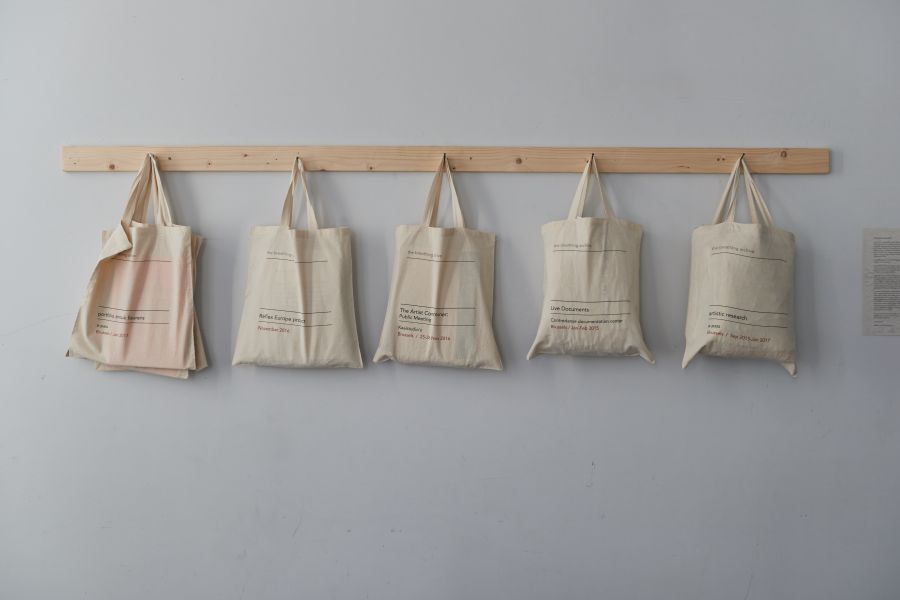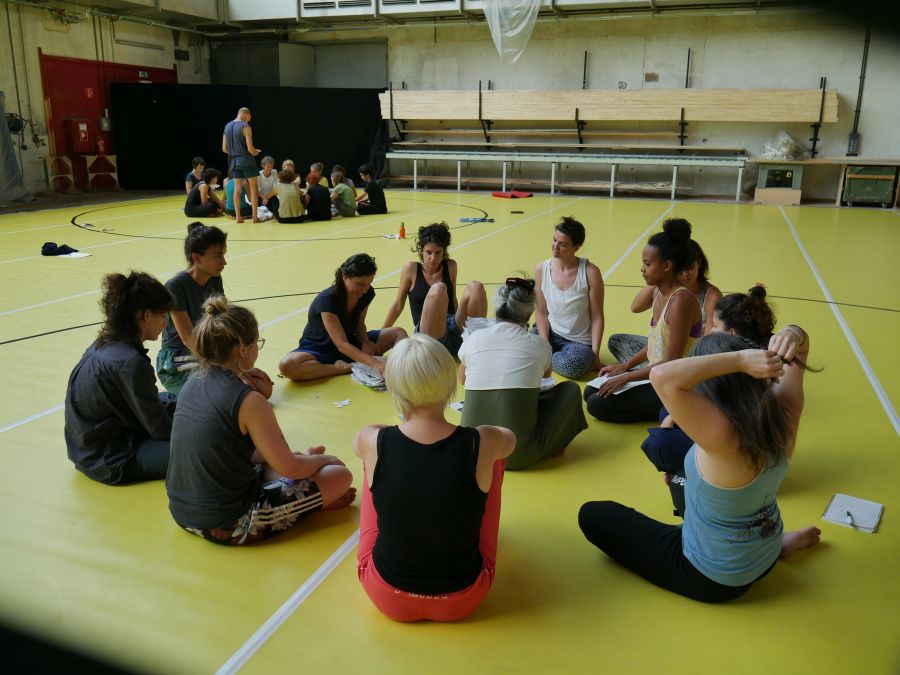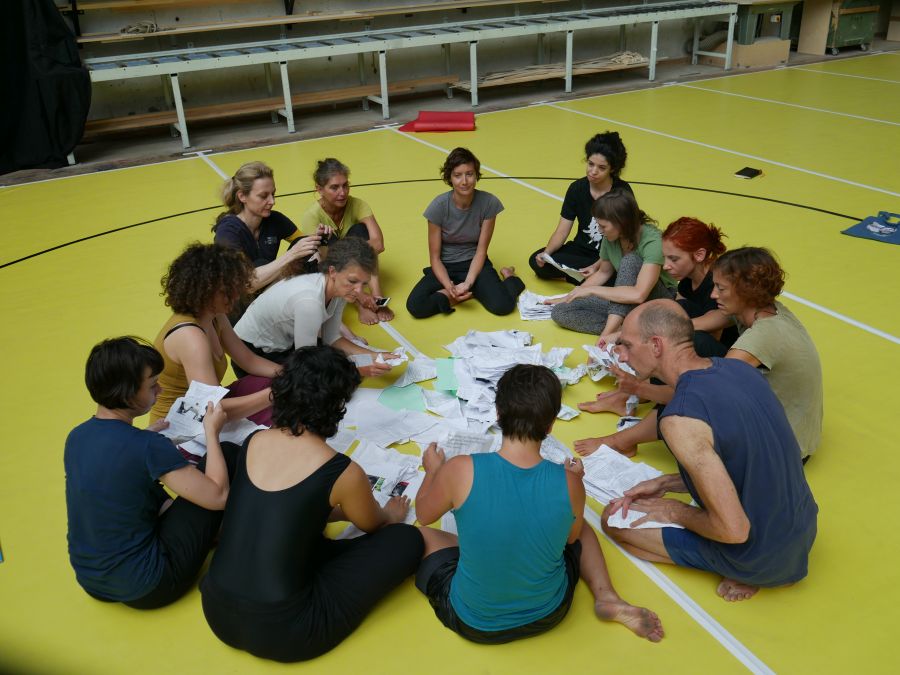IDOC Type:
In Folders:
Particiants: Colleen Bartley(UK); Gina Battistich (AU); Joana Chicau; Aleksandra Dolgova (RU);Joana Fernandes Silva (AU); Gosia Gajdemska (DE); Johanna Henritius (FR); Sabrina Huth (NL);Viktorija Ilioska (MK); Sasha Kleinplatz (CA);Silvia Marchig (HR); Anne Mégier (AU);Rayén Mitrovich (CL); Deirdre Morris (USA);Johanna Nielson (AU); Marianna Panourgia (GR);Maria Probst;Gwen Rakotovao (FR);Ilana Reynolds (USA); Agnes Schneidewind (AU);Melina Seldes (AR); Matthew Shyka (USA);Angela Veronika Stöcklin Schweiz (CH);Georg thaler-szulyovszky (AU);Alina Tretinjak (AU);Laura Unger (DE)
During the Masterclass of MIND THE DANCE with Sabina Holzer and Anouk Llaurens at ImPulsTanz, Anouk Llaurens introduced the practice of "The Breathing Archive" to explore/ get in touch with the printed version of MIND THE DANCE publication.
Contextualysation of the The Breathing Archive's practice.
Extract of a text written for The body in revolt, ICK webzine, By Anouk Llaurens , November 2018.
"I am involved since 2013, in an artistic research on poetic and polyphonic dance documentation. This is how I was invited to contribute to MIND THE DANCE. I started my research asking myself: What if dance artists apply their perceptual, motor, mental, and composition skills to document their own practice? I was interested to create and encourage a documentation that emanates from an embodied consciousness so that dancers empirical perspective have a voice in the creation of dance archives and dance history. What kind of documentation could emerge from such an approach? (...) One morning, during a movement exploration, I thought of DNA as a kind of archive. This insight made me realize that living was an on-going documentation practice and our perceptual apparatus, an embodied and organic documentation technology. If the body was a living archive, the document was not only the book, the video, nor any external object but also the experience of the person that red it, saw it, touched it. A document could be an abstraction, a removal from experience and also the experience itself. To give more weight to the “living aspect” of the document I became as interested in the activity of archiving, as in the archive itself. My research was not anymore about “knowledge production”, accumulating and capitalizing knowledge but about the process of learning and unlearning from an interaction with the world. Since then, the research is exploring performances and practices as forms of live documents. It observes what kind of experiences and self-discoveries these paradoxes might trigger. Even though live documents are written scores to be played, the research wants to displace the attention to the experience of the score, rather than the written score itself.
The breathing archive is one of these live documents. It invites players to edit collectively an ephemeral document that is contingent to the present conditions. The core action of the practice is to crumple and un-crumple printed A4pages. This simple action done with care wishes to send us back to the basic life’s movement, like the movement of cells breathing and heart beating. Before crumpling and un-crumpling the pages, players are invited to pay attention to their own breath as a continuous support for their action. Breathing as a ground induces an attentive and open presence that favors the emergence of a poetic experience made of sensations of paper, flesh, sounds, words, images, table, colors, smells, emotions and thoughts."
Exploration of the printed version of MIND THE DANCE through The Breathing Archive
The breathing archive's practice has been applied to different contents. (see http://mindthedance.com/#article/34/the-skin-is-the-most-external-layer-of-the-brain)
As a continuation of my research I was curious to apply it on the printed version of MIND THE DANCE . What would participant get from physicaly diving into these texts, scores and images? What kind of experience could they compose, individualy and collectively, out of it ?
The breathing Archive Score
I am usually guiding the practice through talking. I am following a score . I take care to give enought time to players to experience the different layers of the score. I take instruction from the room (what i see, feel, hear... ) to introduce a new layer. I have recorded my guidance that day and made a summarised transcription of what I have said. You can also listen to the audio recordin that is below the video fragments on this page.
The breathing archive score (for this day)
There is a video camera on the floor that records what enters its visual field and the sounds produces by the practice. You can let it be moved by what is happening, shut it, orientate it or take it in your hand to film what interest you. (see video fragments below)
0 Spread the pages on the floor and find a comfortable position to start.
1 Close your eyes. Pay attention to your sensations.
2 Take a moment to pay attention to the movement of your breath. Where do you feel it the most in your body? You might notice that when you breathe in your are inflating in all directions and lightening up and when you breathe out your are deflating towards your center (navel) and making an intimate contact with the floor.
3 In Traditional Chinese medicine, the breathing function is connected to the skin, which is your porous outer border. Pay attention to what you are touching and what is touching you. The body is touched in all directions and is touching in all direction.
4 Bring your attention to your hands, one of the most articulated and sensitive part of yourself and start exploring your environment, meeting paper, floor, objects, people, air, your own body…
5 When you are ready you can start crumpling and un-crumpling the pages that you encounter on your way. Resist the temptation to open your eyes so you stay in the realm of touch and sound.
6 Pay attention to the soundscape we create together of crumpling and un-crumpling. What if your continue without making any sound?
7 Whenever you are ready you can start to make snapshots and let the light touch your retina. The snapshot get longer and longer until your eyes stay open.
8 Continue the activity of crumpling and un-crumpling the page with your eyes open. What do you see?
9 Take a step back and only look at the environment without touching it with your hands. Follow your visual interest.
10 You can start to read what is written of the pages in silence, crumpling and un-crumpling them.
11 If you find a written movement score on a page, you are invited to play it.
12 You can start to read out loud fragments of texts written on the pages, or describe what you see if it is an image. Pay attention to the soundscape we create together. Keep in mind that you Edit/compose a unique and polyphonic document with the other players.
13 Take a step back and look at the environment we created.
15 Un-crumple and pile up the pages.
Note about pictures and video: The pictures have been taken by several participants and myself as well as the videos. I have been editing the video fragments so they can be hosted on this platform. Not all layers of the score are represented in the video fragments.
Thank you to all participants !





















